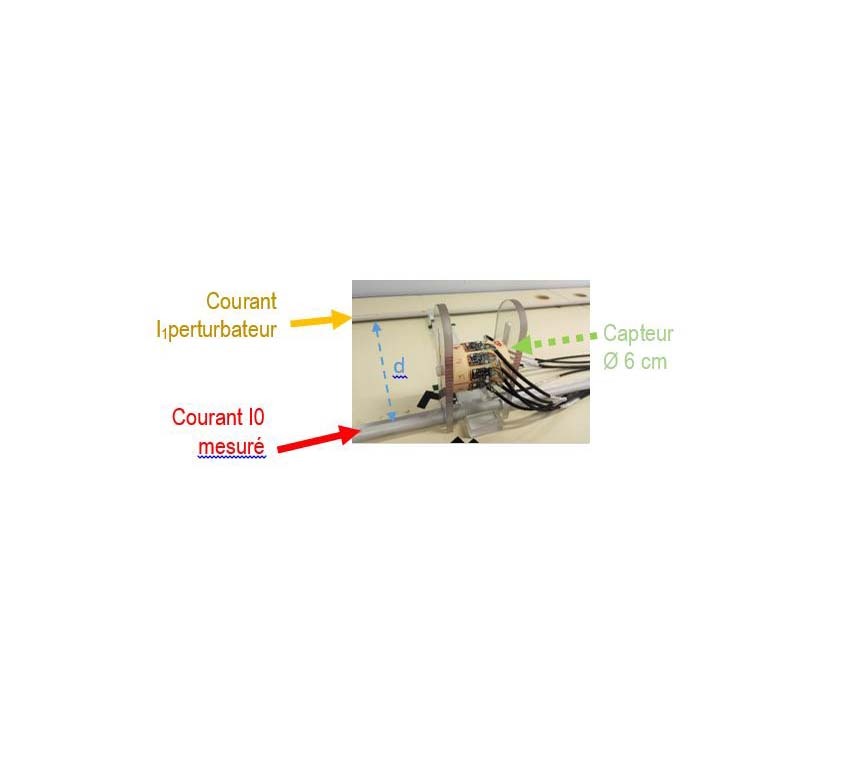HARMOSENS 2D
Accurate and contactless measurement of the AC/DC electrical current


Benefits
- Spatial rejection of the noise due to the other conductors
- Self-calibration without knowledge of the current to be measured
- Measures a few centimetres from the conductor, without surrounding it, without contact
Key words
- Measures the current without contact
- Spatial harmonics
- Magnetic field
Intellectual Property
- 1 patent
- 1 software
- 1 knowhow
Laboratory
- G2Elab
Institutions
- CNRS
- GRENOBLE INP-UGA
- UGA
Linksium Continuum
- Maturation
- Commercialization
Results
- Transferred licenses
Context
The control of energy flows in HTA distribution lines requires accurate measurement of the electric current, on demand and in complete safety. The sensors currently on the market are inserted in or around the conductor to be measured (shunt, current transformers, Rogowski).The HarmoSense2D sensor achieves the same accuracy, but without contact.
Technology
The measurement of the current by HarmoSense2D is based on the resolution of an inverse problem enabling the calculation of the current (cause) from the magnetic field measured (effect). This magnetic field, decomposed into spatial harmonics, depends on the characteristics of the sources located within the environment of the sensor. In a given sequence and optimal position, these harmonics are simply the image of the current of the conductor to be measured. An autocalibration procedure is then carried out to establish the transfer function between these harmonics and the current to be measured in the appropriate cable, without knowledge of the currents at hand.
Advantages
- The noise rejection due to the other conductors provides an accuracy < 0.5%,
- Due to its ability to autocalibrate, it is not necessary to have a qualified technician to carry out current measurement campaigns,
- Measures direct current (DC)
State of progress
From 2015, 2 prototypes constituting a Proof of Concept have been operational. They have enabled validation in a laboratory and an industrial environment on AC and DC lines with magnetic interferences due to adjacent conductors. The current is measured with an accuracy < 0.5 %.
Applications
One-off or permanent measurement of the electric current in three-phase overhead lines.

